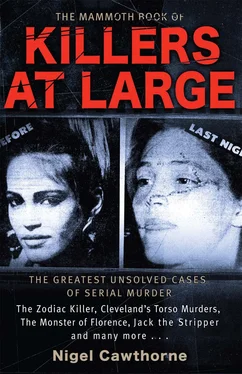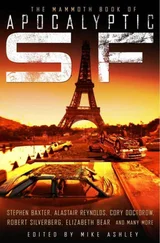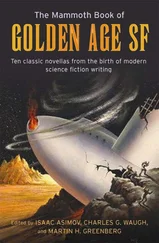Leader of the Congress of Racial Equality Roy Innis then blamed the murders on a Satanic cult involved with pornography and drugs, and he revealed the existence of an alleged ritual site, resplendent with large inverted crosses. He also produced a female witness who passed two polygraph tests, but the police took the investigation no further.
With the police and FBI investigations getting nowhere, the residents of the Techwood Homes housing project took matters into their own hands and began “bat patrols”—residents would patrol the streets armed with baseball bats. Some of the actions the communities had already undertaken may have had an effect. Detectives had already noted that the killer’s area of activity seemed to have moved out from the centre of the city to more outlying areas and his victims were getting older. The same day Hill’s body was found, the Atlanta task force added 20-year-old Larry Rogers to their list. Although he was considerably older than the other victims, like many of them, he had been asphyxiated. He was mentally retarded and his body was found, not in a river, but in an abandoned apartment.
Although Larry Rogers was no relation of Patrick Rogers, he had a connection to Wayne Williams. Larry’s young brother had been involved in a fight and suffered a head injury. Williams overheard reports of the incident on police channels. He beat the police to the scene and took the injured man to hospital. Later he picked up the boys’ mother and took her to an apartment where the younger Rogers was holed up. This apartment, Mrs Rogers testified, was near the one where Larry’s body was later found.
Then on 8 April 1981—and the very day the bat patrols started—the body of 21-year-old Eddie “Bubba” Duncan was found. No cause of death could be established, but asphyxia was suspected and as Duncan was physically and mentally handicapped he was added to the list. Previously murder victims over 21—and thus adults—were not included. But Eddie Duncan, it was discovered, had ties to Patrick Rogers.
On 1 April, another adult victim of asphyxiation, 23-year-old Michael McIntosh, an ex-convict, was pulled from the Chattahoochee River and ended up on the list. He had last been seen on 25 March, but a shopkeeper who said he saw McIntosh being beaten up by two black men. Again he had connection with other victims. He lived across the road from Cap’n Peg’s seafood restaurant where Jo-Jo Bell had worked and had been seen at Tom Terrell’s house along with Bell and Timothy Hill. It was thought that he was a homosexual himself.
It was plain that who made the official list was arbitrary. Critics pointed to the murder of 22-year-old Faye Yearby in January 1981. Like Angel Lenair, she had been found tied to a tree with her hands behind her back. She had also been stabbed to death, as had four of the acknowledged victims. However, the police refused to put her on the list on the grounds that she was female—though there were two girls on the list—and that she was too old—though McIntosh was a year older. Combing the police records, former assistant Atlanta police chief Chet Dettlinger came up with 63 murder victims that essentially met the same criteria as those of the list but were omitted—25 of them occurred after the arrest of Williams that supposedly ended the killing spree. Some critics maintain that the list itself hampered the investigation as it led detectives to assume that everyone on it was been killed by the same hand when the various modus operandi employed suggested that more that one killer was at large.
Dettlinger also noted that, just as the victims were getting older and the murders were moving out of the centre of the city, they were also moving eastwards. However, the bodies were always found on the same 12 streets—if you extended them eastwards out of the central area. Even those dumped in the Chattahoochee and South Rivers were found in the vicinity of bridges carrying those same streets out to the eastern suburbs. Dettlinger first offered his help to the police, then to the families when the accuracy of his predictions of where the killer would strike next led him to become a suspect. After he was cleared, the FBI took him on as a consultant.
Meanwhile the death toll went on climbing. In April 1981, another ex-convict, 28-year-old John Porter, was found dead. He had been in and out of mental hospital and, shortly before he had disappeared, his grandmother had thrown him out of her house for fondling a two-year-old boy in her care. His body was found on a sidewalk in an empty lot. He had been stabbed six times. Porter did not make the list. However, at Williams’ trial he was linked to the other murders by now disputed forensic evidence involving microscopic fibres and hairs.
Twenty-one-year-old ex-convict Jimmy Payne was reported missing on 22 April. His sister said that he had left the apartment they shared with their mother the day before to sell some old coins to a coin shop. His girlfriend said that he had walked her to the bus stop the day he went missing and she became concerned when he did not pick her up when she returned as they had planned. Payne was known to suffer from bouts of depression which had been particularly severe when he served time in jail for burglary. Once he had tried to hang himself with his bed sheets, but had been cut down before he succeeded. Six days after he disappeared, his body was recovered from the Chattahoochee River. It appeared that he had been in the water for almost all that time. The cause of death could not be determined but it seemed probable that he had been suffocated and he was added to the list.
Seventeen-year-old juvenile delinquent William “Billy Star” Barrett went missing on 12 May. He was on his way to pay a bill for his mother. Found later that day not far from his home, he was another victim of asphyxiation, but he had also been stabbed after he had been strangled. At first he was not added to the list as the police had reports that he might have been the victim of a hit man. But then it transpired that he had been seen with paedophile John David Wilcoxen and had connections to the unnamed child molester in the Lubie Geter case. That man was seen at Barrett’s funeral.
As several of the victims’ bodies had been found in local rivers, the police began staking out the city’s waterways. Officer Freddie Jacobs was stationed at the south end of James Jackson Parkway Bridge over the Chattahoochee River. Before dawn on 22 May, he saw the headlights of a slow-moving car approaching. It was a 1970 Chevrolet station wagon. Then Officer Bob Campbell, who was stationed on the river bank under the north end of the bridge, heard a splash in the water, saw ripples in the water and radioed Jacobs, who kept the car under surveillance.
At the far side of the bridge, veteran Officer Carl Holden was stationed outside a liquor store, watching for anything suspicious. He saw the station wagon standing on the bridge. It then moved off, turned in front of the liquor store, then re-crossed the bridge. He followed. A mile the other side, the car was stopped by FBI Agent Greg Gilliland.
The driver was 23-year-old Wayne Bertram Williams. He said that he had crossed the river to visit a woman named Cheryl Johnson whom he planned to audition, with the aim of promoting her as a singer. But the address he gave did not exist. The phone number was also bogus and there was no Cheryl Johnson in the phone book. The police searched Williams’ car and spent two hours grilling him. Meanwhile the police dragged the river, but nothing was found. Nevertheless, the next day, Williams was interviewed again. He had been in trouble with the law once before. In 1976, he had been arrested for impersonating a police officer and illegally equipping his vehicle with red flashing lights, but he was not charged.
Читать дальше











